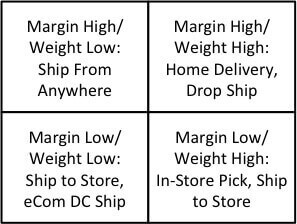Manhattan Momentum 2015: Walking Miles In Customers’ Shoes
Manhattan Associates’ Momentum 2015 almost closes out the spring user conference season. Of all the conferences I’ve attended so far, I have to say Manhattan had the happiest customers.
Part of the reason for this may well be that Manhattan’s team seems intensely focused on seeing the world through their customers’ eyes. The breakout sessions that I attended, especially the ones focused on product enhancement plans, reflected the kind of intimate, detailed process knowledge that comes from literally walking miles in customers’ shoes – learning these processes by living them.
In some ways, this is not surprising. While “distributed order management ” – arguably Manhattan’s flagship product in the retail world in recent years – has matured to the point where it is practically accepted as a must-have piece of omni-channel architecture, the things that retailers are doing with DOM are still evolving, and reflect that we are still in early, early days when it comes to the process changes that are being driven by omni-channel shopping patterns.
For example, on the front lines of ship from store processes, retailers are grappling with the cost of split shipments – when you source from stores, the odds that you are going to be able to source all order lines from within one location in order to meet demand decrease as the number of order lines increase. Retailers are figuring out how to respond. Do they hold back more inventory at the eCommerce DC so that orders don’t have to be shipped from store? But what does that do to presentation inventory in stores?
Even worse, what does that mean for the plans for stores in the first place, if inventory had to be sourced from stores to meet demand elsewhere? How do retailers capture and log these misplaced demand-inventory matches? And how do they get them back to merchandise planners so that they don’t make the same mistakes next year?
Different retailers have different answers to these questions, and one thing that came clear to me at Momentum is that there is no real “right ” answer. It depends on how retailers are organized, and it depends a lot on their customer experience strategy and the type of goods they sell. The economics of what they ship plays an important role too – a ratio that we at RSR have come to call the “margin to weight ratio. ” Depending on how the ratio plays out, retailers are more or less likely to be flexible about using any inventory to meet demand:

Manhattan Associates is clearly working closely with its customers to help them figure out the answers to these questions, and the flexibility and optimization capabilities they are baking into their products reflect the reality of many questions, few clear answers.
Now, focus on customers’ needs is without question a good thing. The challenge ahead for Manhattan is balancing the short-term needs of customers with longer-term “medicine ” – things that are good for customers, but not necessarily things that customers will ask for. Everyone knows they need to eat their vegetables, but that doesn’t mean they are going to demand them from the chef.
Cloud delivery is a perfect case in point. Cloud methods of delivery aren’t exactly “medicine ” as in accepted cures for known problems. But this method of delivery is increasingly what vendors are serving up, whether customers want them or not. Cloud does solve a lot of problems – it helps vendors keep customers on all the same version, which prevents retailers from falling off of maintenance and eventually abandoning the investments. It also forces the vendor to focus development efforts on small, rapid-delivery features that deliver value in small increments, rather than long slogs to deliver complex, creaking, and sometimes bug-ridden enhanced versions that become expensive for retailers to implement.
While not everyone is committed to cloud delivery – and by this I mean single-instance, multi-tenant solutions – the TCO benefits that come from moving to cloud are getting big enough that retailers are starting to eye the whole cloud thing with less skepticism and more interest. Some vendors are adopting it as their main strategy – as in, this is our primary method of delivery, and we’ll grudgingly license a solution if you insist on it. And some vendors are using the delivery method to make their solutions palatable for small and mid-size retailers who want the functionality but don’t have the IT resources to implement or maintain it.
From the way retail customers have responded to other vendors’ efforts to move everyone to cloud, it is clear this is medicine many don’t want to take, and not all of them even believe it is “medicine ” vs. “snake oil “. It increasingly appears, however, to be the preferred future delivery method of major technology vendors. For Manhattan, the question will be – do we lead? Or do we follow? Like so many questions in the omni-channel space, it is one with no clear answer.
